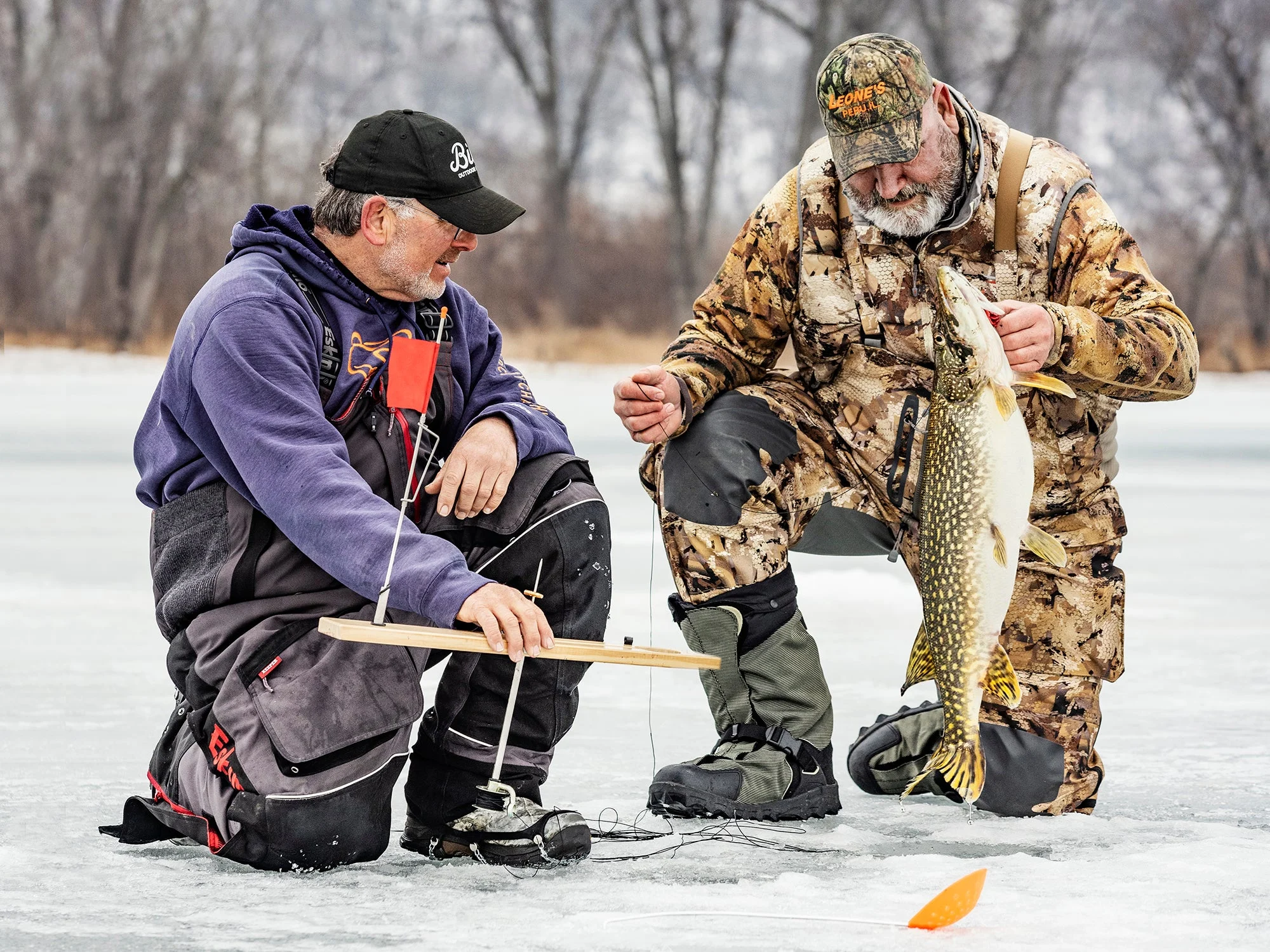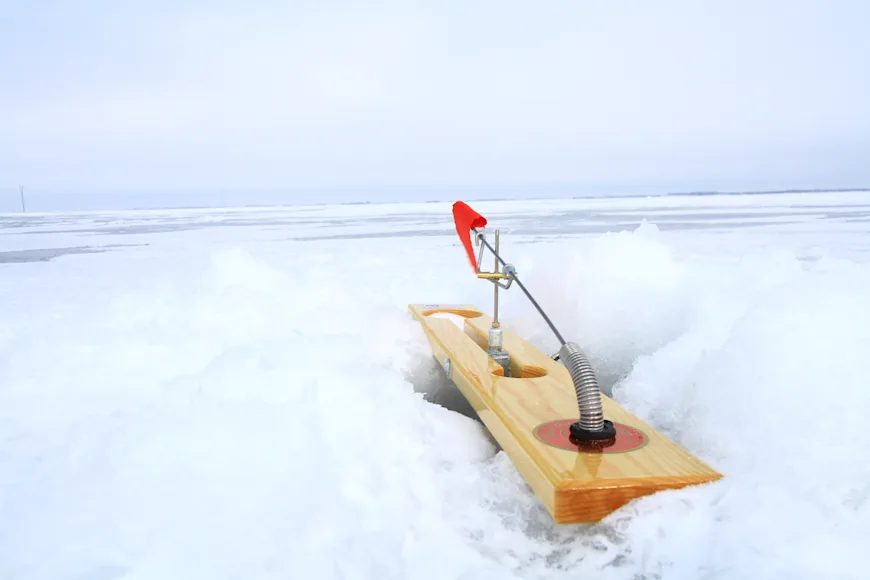I don't mind putting time and effort into ice fishing when the payout is big. I’m not talking coolers brimming with crappies and yellow perch, either. I’m talking about fish that make you question how the hell you’re going to get them through the hole, assuming you survive the fight. I experienced this a year ago on Colorado’s Lake Granby. There I was, kneeling with my nerves shot, watching my little reel’s spool spin at such high RPMs that I was expecting it to fly off. For two days I worked for that bite, jigging soft plastics big enough to catch tuna in 50 holes a day. Somehow, I didn’t screw up and put a 43-inch lake trout on the ice. It was the coolest experience I’ve ever had on hard water.
But that was a special case. Most of us aren’t lucky enough to live close to lakes that offer the opportunity to battle true drag screamers in winter, myself included. So when I hit the weekend ice for the common local players, like bass and pickerel, just give me some good buddies, a propane grill, some lively shiners, and a few buckets of tip-ups.
Run For It
To many in the “hardcore” ice crowd, tip-up fishing is a joke. It’s for meat fishermen only. It’s for lazy people. Well, I say that seeing a flag pop up is the hard-water equivalent of watching a bobber go down, which should never get old. If you’ve lost the ability to get the warm fuzzies over such things, maybe you’ve lost sight of why you fell in love with fishing in the first place.
I’m not ashamed to admit that the older I get, the more my drive to fish in bitter-cold weather wanes. If I’m going to strap on cleats for predominantly 2-pound bass and a 20-inch pickerel (if I’m lucky), I need those warm fuzzies, and sitting on a bucket jigging a waxworm for hours doesn’t give them to me. On the other hand, much like lawn darts and Slip ’N Slides, tip-ups transform a subpar social gathering into an event to remember, even if not always for the right reasons.
I once supported a friend of mine as he hobbled on one leg all the way across a North Jersey lake. His sprained ankle was swollen and turning purple. He’d be laid up for days. But that’s the price you pay for racing to a popped flag on fresh ice to beat everyone else to another dinky bass. We still laugh about it every time we see each other. Then there’s the buddy who always insists on setting at least one tip-up a mile from the rest. In the morning, you’ll all race to that one when the flag goes up; after lunch, and perhaps a few cans of suds, you’ll argue over who has to go after the outlier this time. If you’ve got kids on the ice, that’s when you set a half-dozen a mile away, because it’s a guarantee they’ll be so knocked out by the end of the day, you’ll actually have them in bed before The Simpsons.

Tech Tips
Speaking of screen time, if you’ve got one of those snazzy underwater ice-fishing cameras, bring it. Training a camera on one of your shiners adds a whole new element of fun to tip-up fishing. It’s like flicking on an MMA fight during a frat party. Nothing captivates grown men in ice-fishing garb like two pickerel locked in on a bait. The suspense is killer. Will they attack? If so, when? Which fish will make the first move? Bets have been placed during this kind of programming.
Useful fishing intel has been gained too. It’s easy to assume that when you set tip-ups, flags fly when a fish happens upon the bait and attacks. But combining today’s technology with traditional tip-up fishing has taught me that this isn’t always the case. I’ve seen bass, pickerel, walleyes, and crappies study live baits for up to 20 minutes before finally committing. They might eat when a shiner changes direction, or finally tires and stops moving, or bolts in a quick burst of speed after swimming in a slower, steadier rhythm. Watching these fish has given me invaluable insight into how to work lures and flies to trigger a bite in other situations, particularly right after ice-out when the water is still cold.
Like your grade school teacher always said, learning can be fun. On the hard water, though, that starts with using tip-ups. Also, it’s a good idea to invite your slowest buddy, so you get to tug on more fish—and one who’ll make the effort to get homemade kielbasa from the good Polish deli, and not just grab a pack of Hillshires from the Stop-and-Save. They may well be the same person.


